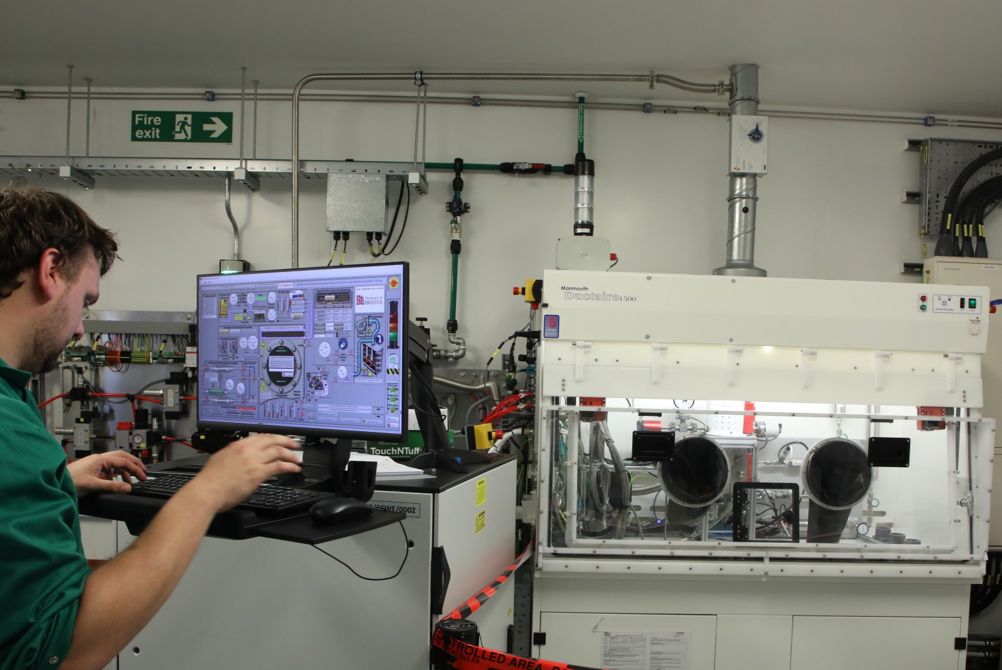The battery uses the radioactive isotope carbon-14 – known for its role in carbon dating – to generate small amounts of electricity through radioactive decay. With a half-life of 5,700 years, the isotope could potentially power low-wattage devices almost indefinitely.
Possible applications include biocompatible batteries for medical devices like ocular implants and pacemakers, eliminating the need for surgical intervention when batteries reach end-of-life. Carbon-14 diamond batteries could also be used in extreme environments, for example in radio tags to track payloads in deep space.
The battery was developed via a collaboration of Bristol University with the UK Atomic Energy Authority (UKAEA). Harnessing UKAEA’s fusion research, scientists and engineers from both organisations worked together to build a plasma deposition rig, a specialised apparatus used for growing the diamond at UKAEA’s Culham Campus.
“Diamond batteries offer a safe, sustainable way to provide continuous microwatt levels of power,” said Sarah Clark, director of Tritium Fuel Cycle at UKAEA.
“They are an emerging technology that use a manufactured diamond to safely encase small amounts of carbon-14.”
MORE FROM ENERGY & ENVIRONMENT
Having developed the concept for the battery, the Bristol team approached UKAEA for its materials expertise, in particular its knowledge around encapsulating hydrogen isotopes for the fusion fuel cycle. Together, the team then developed the deposition rig, which created the thin layers of diamond that envelop the carbon-14 isotope in the battery. Electrons generated by the isotope’s decay pass through the diamond - which is a semiconductor material – generating the battery’s electrical current.

“No one has ever done this before,” said Professor Tom Scott, Professor in Materials at Bristol University. “We can offer a technology where you never have to replace the battery, because the battery will literally, on human timescales, last forever.
“Our micropower technology can support a whole range of important applications from space technologies and security devices through to medical implants. We're excited to be able to explore all of these possibilities, working with partners in industry and research, over the next few years.”











Emergency law passed to protect UK steelmaking
There is an old legal adage ´hard cases make bad law´ and it seems to apply to this draconian legislation, which gives sweeping powers to the...